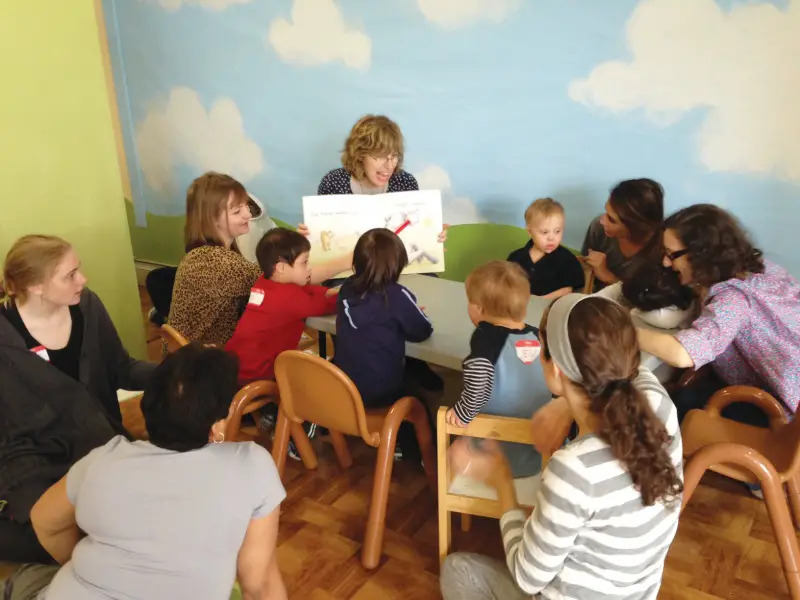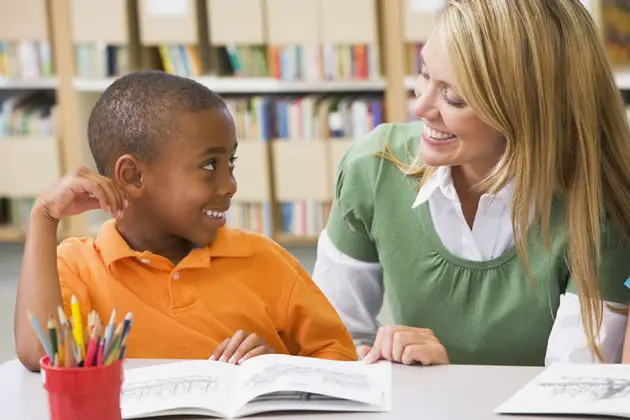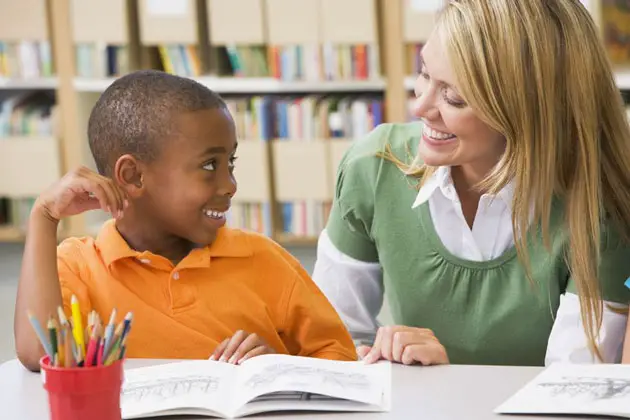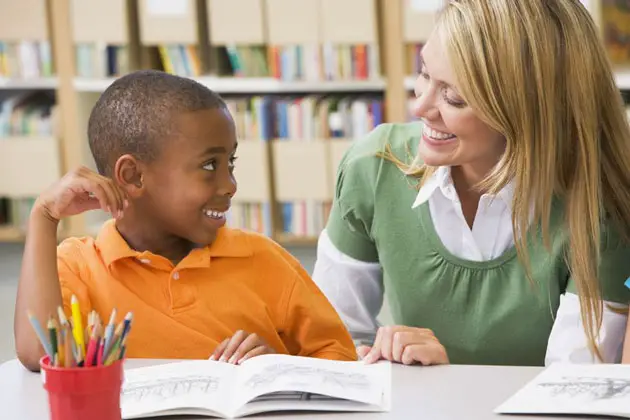Apart from an improved aptitude for learning, literacy helps children with Down syndrome by building self-esteem and confidence to interact socially.

A literacy pod at GiGi’s Playhouse NYC where children with Down syndrome learn to read together.
Five-year-old Aedan pointed to each word and read them aloud: “I go to school.” The words were printed in a five-page book he had been working on once a week for the last eight months at GiGi’s Playhouse NYC, a Down syndrome awareness and literacy center in Manhattan.
The level-one book was created specifically for Aedan to help him learn to read despite developmental delays due to his low muscle tone, a common challenge for children with Down syndrome. Part of the goal is to get him to become more verbal, a skill that has been proven to be enhanced by reading, according to “Teaching Children with Down Syndrome to Read,” a 1993 published research article authored by Sue Buckley and Gillian Bird. Additionally, the ability to read allows people to actively contribute and participate in the world.
“Education empowers all children. We educate children because we want them to have the pleasure of deciphering the world,” says Jordana Mendelson, Aedan’s mother and the volunteer education director at GiGi’s Playhouse NYC.
Today the Global Down Syndrome Foundation states that early physical and speech therapies for babies with Down syndrome can make a major difference in a child’s physical and intellectual development, yet it is the least funded genetic condition by the National Institute of Health.
“A major misconception is that many think it’s not possible—that [children with Down syndrome] don’t have the intellectual capacity to learn,” says Jessica Cha, Aedan’s tutor, who has a bachelor’s in early childhood special education from New York University and is now studying literacy for special learners also at NYU. “But there are different ways of teaching, and it’s possible to reach an end goal.”
Traditionally, reading is taught through phonics, where students learn the alphabet first, then move to words, and finally to phonics. In the case of a child with special needs who may be severely speech delayed, sounding a word out may not be the best method.
Instead, for children with Down syndrome, who tend to be visual learners, a different method that focuses on pairing images with words has proven to be successful.
“We know that kids with Down syndrome typically learn to read between 5 years and 5 months to 10 years old. Learning to read is very complex, and part of the dilemma for our kids with Down syndrome is that they have less than half the exposure to print than your ‘typical’ kids,” says Patty McVay, the director of education at the Linda Crnic Institute for Down Syndrome based in Colorado and funded by the Global Down Syndrome Foundation. “What also plays a very big role is the belief of what children with Down syndrome can achieve.”
In 1979, Sue Buckley, now the director of science and research at Down Syndrome Education International and Down Syndrome Education USA, a leading charity that has been at the forefront of developmental and educational research for children with Down syndrome for more than 30 years, pioneered the research on early reading instruction for children with Down syndrome and found that teaching sight words in preschool helped their overall language and cognitive development.
At GiGi’s Playhouse, Mendelson uses a variety of evidence-based early reading materials for children with Down syndrome to help teach Aedan to read, including “Fast Flash Cards” championed by Natalie Hale, a mother of an adult with Down syndrome, that leverages a child’s strength in visual learning; and research and methods published by Patricia Oelwein in “Teaching Reading to Children with Down Syndrome.”
“Fast Flash Cards” use large type and display text and accompanying illustrations on separate pages to reduce distractions a child with Down syndrome may have if the words and images were placed on the same page.
Similar to “Fast Flash Cards,” Oelwein’s approach leverages a child’s strength in visual learning to help children with Down syndrome to read by matching pictures, selecting words that go with pictures, and then finally naming the words.
“There are educators and specialists who have been doing this since the ’70s. You think about that and you think about how it hasn’t made its way to the general public’s perception—that’s kind of mind-blowing,” Mendelson says. “Children should be inheriting a much different situation, and the Playhouse is really playing a key role
in that.”
Along with opening up doors for imagination, reading also has a social aspect and helps boost self-esteem for all children.
“Literacy is not just a mind skill, it’s a social tool,” Mendelson says. “Aedan got the same high-fives [as his typically developing peers] when he was using his finger and saying ‘I see dog.’ It boosts his self-esteem. He knows this amazing thing is happening…. I hope he’s inspired to read novels and poetry.”
Want to get involved? Here’s a list of local organizations that provide support to children and adults with Down syndrome.




















